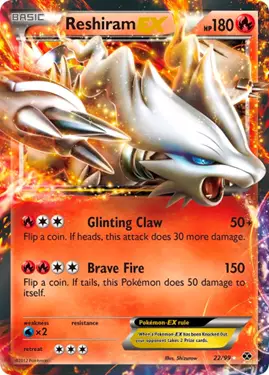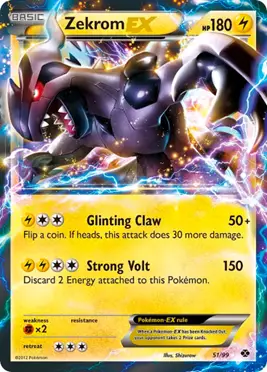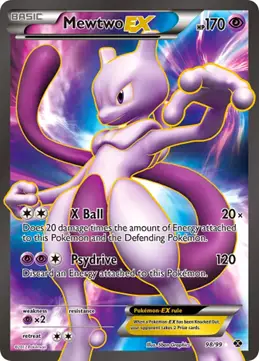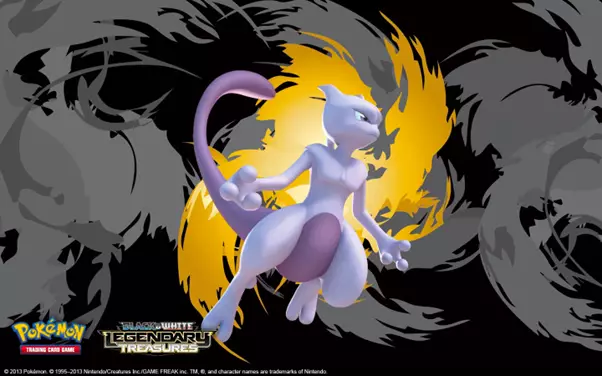Loading...
Products
Magic: The Gathering Line
Hello everyone! This is Elena (Gaia Storm TCG) and today we have another Pokémon article that I hope you like. As I’ve said before, I’ve been playing Pokémon TCG for more than 10 years and in that period of time, many wild things have happened. So, for this occasion, I wanted to go over a very interesting moment that completely changed the way in which the game was played: the release of Mewtwo EX.
Let me start by painting a picture of how Pokémon TCG was back then so you can get the complete idea. We are in the year 2011 and a new era has just begun. Pokémon Black and White was released and it came with a brand new type of card, the EX Pokémon. These Pokémon were big Basic Legendaries that had a massive amount of Health Points (170 or 180 compared to the 150-160 cap of Evolution Pokémon) and could deal a lot of damage at the cost of giving more prizes to your opponent once they fell in battle. The first two Pokémon EX that appeared were, of course, Reshiram and Zekrom because they were the main icons of the new generation. And yes, competitively speaking they were pretty decent and players started to experiment with them but they didn’t turn the metagame upside down.


Most decks in that era revolved around evolutions (the signature mechanic of Pokémon TCG) and, sometimes, you even had to set up your stages 2 in order to get going. That meant that for the first couple of turns of the game, your focus was to try to get the perfect board, evolve your low HP-Pokémon and go from there.

Now, let’s fast forward a few months later, when the expansion Next Destinies is released (February 2012). This set featured a couple of new Pokémon EX cards but there was one that shone above all: Mewtwo EX.
Apart from having one of the most stunning artworks I’ve ever seen, Mewtwo EX had an attack with unlimited potential. X Ball dealt 20 damage times the amount of Energy cards Mewtwo and the Pokémon it was attacking had attached. We need to remember that back in those days we had a card called Double Colorless Energy that provided, as the name says, 2
energies. That meant that Mewtwo could be powered up in just one turn and use X Ball straight away.
You might think that X Ball does sound a bit situational because, at the end of the day, it could only deal a considerable damage depending on the amount of energy cards your opponent had, but let’s consider the following:
All this caused a powerful earthquake in the game and decks suddenly had to adapt to the Mewtwo reign. In fact, the most successful strategies were those which used Mewtwo EX as their main attacker and focused on accelerating energies onto it. There was nothing more scary than seeing a fully powered up Mewtwo EX in the opponent's field.
You know the saying: “If you can’t beat them, join them”. In this case, this became a reality in Pokémon TCG but it was more a necessity to survive
than any other thing. You see, there was actually one thing that could deal with Mewtwo EX and it was… another Mewtwo EX. If you look at the card again, you will see that Mewtwo EX was weak to Psychic attacks so that meant that another Mewtwo EX could take it down very easily with few energies attached.
In other words, the best and more effective counter to Mewtwo was Mewtwo EX.
Many decks that didn’t focus around Mewtwo, if not all, started running Mewtwo as a secondary attacker to have a chance against the opponent Mewtwo. This created a situation where both players needed to be cautious with the weakness dynamic and try to avoid committing too many energies to their own Mewtwo for fear another Mewtwo could finish them off. This “Mewtwo vs Mewtwo” back and forth was popularly known as “Mewtwo Wars”.

Mewtwo dominated the game for months until other very powerful EX Pokémon appeared and could stand up to it. But even with that, Mewtwo was always a very powerful weapon that every deck could benefit from. No wonder why it became one of the most expensive cards of the time. Since then, multiple Mewtwo versions have been printed throughout the years but they never had the impact that Mewtwo EX had.
Mewtwo opened the door to another Pokémon era, where Big Basic Pokémon dominated the game for years. It will always be remembered as one of the most hated/loved cards of its generation and the one that changed the way in which Pokémon was played.
Thanks for reading!